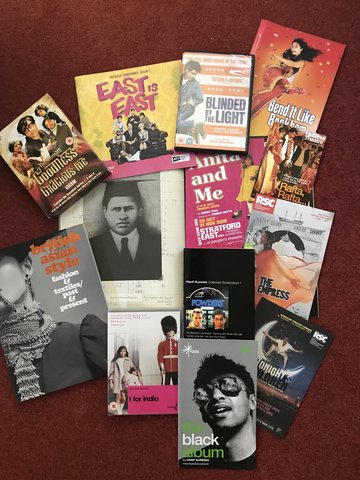
Arts, Culture and Intellectual Life
Artists, creatives, intellectuals and theatre-makers of South Asian heritage have influenced many aspects of British cultural life across the centuries, generating vibrant global networks that continue to open doors to artistic and intellectual interconnections
Overview
South Asian economists, scientists and philosophers have contributed significantly to Britain’s intellectual community. Some studied at British universities, gaining professional qualifications. Some took up academic posts, including the economist R. C. Dutt, who lectured at University College London, a major hub for South Asian intellectual life in Britain. Activist Labour councillor Krishna Menon founded the innovative Pelican paperback list, making economics, history and political theory accessible to a wider British readership.
South Asian scholars have influenced scientific advances. The doctor Frederick Akbar Mahomed pioneered a new understanding of high blood pressure at Guy’s Hospital, London. At Cambridge University, the mathematician Srinivasa Ramanujan collaborated with G. M. Hardy, significantly advancing number theory. In the 1930s, zoologist Cedric Dover’s writings challenged ‘race’ theories. Dover’s pioneering work finds echoes in the anti-racist political activism and campaigns championed by public intellectuals like Tariq Ali and Farrukh Dhondy, who as editor would spearhead multicultural programming at Channel Four Television in the 1980s and 1990s.
Many South Asian artists have had an impact on Britain’s art scene, for example with iconic sculptures by Anish Kapoor. The Singh Twins' Indian miniature painting–inspired work features regularly in art exhibitions and comments on contemporary life in Britain. Chila Kumari Burman’s installations, films, drawings, collages and neons engage questions of feminism, identity formation and belonging.
Since the nineteenth century, South Asians have influenced the performing arts. The Union of the East and West staged a pioneering performance of the play Sakuntala. In the 1930s Aubrey Menen founded the Experimental Theatre Company. Dancers like Uday Shankar popularized South Asian dance, further advanced by the dancer-choreographer Akram Khan. From the 1970s onwards, key South Asian theatre companies like Tara Arts, Tamasha, Kali Theatre Company and Rifco emerged, which commissioned playwrights including Tanika Gupta, Ishy Din, Ayub Khan Din, Jatinder Verma, Sudha Bhuchar and many more. These companies continue to provide a platform for training writers, artists and directors. They are part of an important cultural ecosystem which engages audiences with South Asian British stories.
Across the decades, many South Asians have worked on screen and behind the camera, creating films and decade-defining television programmes. Waris Hussein, son of radio broadcaster Attia Hosain, directed the film version of Santha Rama Rau’s adaptation of E. M. Forster’s A Passage to India (1965). He also directed early episodes of the popular science fiction drama Dr Who. Sanjeev Bhaskar, Meera Syal, Nitin Sawhney, Nina Wadia and Kulvinder Ghir created the radio and television sketch show Goodness Gracious Me (1996–2015). The Retake Film and Video Collective produced the important film Majdhar (1984), starring Rita Wolf, while Gurinder Chadha, after early documentaries like I’m British But… (1989) and the film Bhaji on the Beach (1993), directed the break-out international hit film Bend It Like Beckham (2002).
Recording artists, too, have significantly shaped British popular culture. Freddie Mercury was an iconic rock star of the 1970s and 1980s. Bands like Asian Dub Foundation, Cornershop and Apache Indian emerged into the mainstream out of the Asian Underground music scene, while film and rap star Riz Ahmed has developed a large fan base.
Another interesting thing
During the 1930s South Asian seafarers were recruited as extras in crowd scenes in the films of Alexander Korda, some starring the child actor Sabu. They unionized themselves to form the Oriental Film Artistes' Union to better represent their interests.
Browse this theme
Image credit
F. Stadtler
